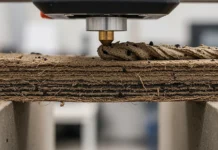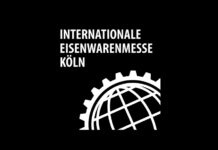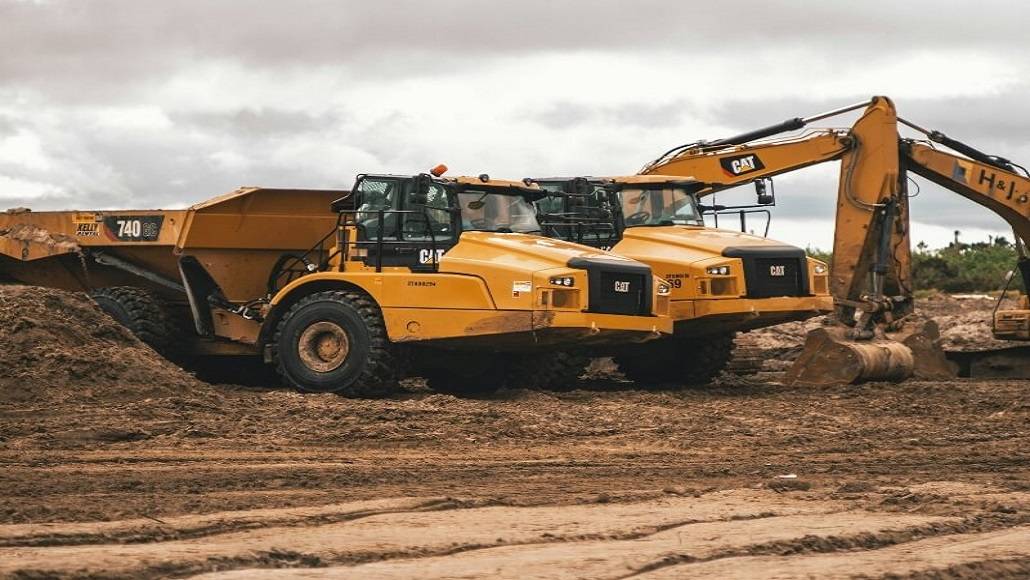Heavy equipment and vehicles are the backbones of construction projects worldwide. However, seasoned professionals may unintentionally overwork their machines, causing breakdowns and project delays. Missteps can significantly affect a fleet’s lifespan and a company’s bottom line.
Here are nine ways construction professionals overwhelm their vehicles and ways to solve them.
1. Foregoing Preventive Maintenance
Preventive maintenance is tied to equipment performance. Whether it’s filter replacements or fluid level monitoring, these routine tasks matter for construction equipment and commercial vehicles. However, workers may overlook this part of their to-do list, which can cause significant issues. Unattended minor issues can quickly escalate into costly repairs.
An excavator operator may forget to check the hydraulic fluid in their equipment based on the manufacturer’s recommendations. A lack of fluids can cause the hydraulic pump to overheat and fail. A team may have to spend thousands of dollars on the repair, thus compromising their budget and delaying site preparation.
Construction professionals should implement strict preventive maintenance schedules for their fleets. Operators and supervisors can use tracking software and digital logs to automate scheduling and ensure everything is completed on time. In addition to the service timetables, daily inspections should occur to detect issues before they become more significant.
2. Delaying Repairs
Tight deadlines could mean there is minimal time to tend to minor repairs. If the team can complete the project anyway, supervisors may delay repairing the equipment until later. However, these minor issues could cause equipment failure and damage to other components. Waiting may worsen the situation by putting workers on the jobsite in harm’s way.
Equipment can be damaged at any time during the project, so construction professionals must be diligent and proactive. For example, a skid steer loader could emit a faint squealing noise from the drive belts. The problem sounds minor, yet it could lead to a belt snapping and alternator damage. This may significantly delay the project due to unplanned downtime.
Supervisors should encourage proactive repairs by implementing a straightforward process for logging repair requests and addressing minor issues. Digital maintenance systems help construction teams track issues, schedule repairs and monitor equipment health. Clear communication is critical for transparency and extending the fleet’s lifespan.
3. Operating at High Speeds
Jobsite employees should work efficiently, but they must also be aware of their actions and use caution on the worksite. Workers may save time by driving vehicles faster than the recommended speed, which can accelerate wear and tear. Rapid acceleration and high revolutions per minute (RPMs) can stress the engine, transmission and brakes faster.
Most construction vehicles do not need all their engine power to do the job. Some construction professionals use low gears and high engine speeds, which increases fuel consumption and drives train wear. Besides internal wear, the equipment risks losing control when operators drive at high speeds. Uneven surfaces can compromise safety and lead to workplace accidents.
Supervisors can mitigate the issue by implementing telematics systems across their fleet. This software monitors vehicle speeds and provides real-time feedback to drivers, alerting them of dangerous behaviour. Telematics devices collect data over time, giving managers information on operator tendencies. The statistics could lead to targeted training and policy adjustments.
4. Overloading the Vehicles
Overloading vehicles on the jobsite is a common mistake made on construction sites. Operators under time constraints or behind schedule may exceed the manufacturer’s recommendations and disregard the risks. Other equipment may be in the repair shop, so supervisors will compensate by overtaxing the working machines. They could also underestimate weight without load monitoring systems.
Overloading vehicles can significantly affect performance and cause mechanical damage. Larger payloads can create squatting, which causes backends to fall due to rear axle strain. If sagging continues, the equipment might be unable to tow or haul the cargo. Besides weight issues, squatting can make driving more dangerous if operators must forcefully maneuver the steering wheel.
The most straightforward solution is to adhere to the manufacturer’s weight limits for each construction vehicle and equipment. Following these recommendations allows operators to work safely and reduces the risk of vehicle strain. Supervisors must properly calibrate their onboard scales and load monitoring systems.
5. Using Equipment on Poor Site Conditions
While equipment is more controllable, supervisors can do little about poor site conditions. Standing water, uneven terrain and mud can overtax construction vehicles by making them work harder. Engines, transmissions and suspension systems must navigate the environment and risk clogged filters and undercarriages. This build up can lead to overheating and mechanical failures.
Site conditions could also deteriorate during the project, meaning supervisors must act in real time. For example, if a dump truck fleet on a commercial building site hauls soil across the property, heavy rain might saturate the ground, creating mud and deep ruts. When vehicles drive into the mud, their radiators will likely become clogged and overheat.
Mitigating the issue is complex because supervisors cannot control the weather. However, they can regularly grade the site and remove as much debris as possible. Construction professionals can use mats and steel plates to increase stability on unstable surfaces. If less time is available, they can reduce payloads to minimize mechanical stress.
6. Overlooking Tire and Track Wear
The engine and other under-the-hood components are a primary focus during vehicle maintenance. However, construction professionals should not disregard the tire and track wear because it could be a costly oversight. Overtaxing vehicles with heavy loads, high speeds or harsh terrain makes them vulnerable to lateral stress and abrasion.
Worn tires and tracks make vehicles more difficult for operators to maneuver. Uneven and slippery terrain means the drive train and suspension must work harder to avoid damage. An unfavorable jobsite could cause tire misalignment, vibrations and unnecessary stress. Improper traction makes the job less safe for employees and others on the project.
Tire and track inspections should be included in the vehicle maintenance routine. If parts are worn, supervisors must quickly replace them according to manufacturer guidelines. Checking the pounds per square inch only requires a few minutes per tire. Teams can use gauges to maintain the proper air pressure.
7. Leaving Equipment Exposed
Construction teams may leave their equipment on the jobsite to save time and reduce transportation costs. This strategy could work if the weather cooperates, but extreme conditions can harm the vehicles. Rain is concerning, especially when the local climate is in the wet season. Prolonged moisture exposure could cause rust and corrosion on the equipment’s metal components.
While rain and snow are immediate concerns, supervisors should be aware of extreme temperatures. Winter conditions can thicken fluids, increasing stress on the engine and hydraulic systems. Construction professionals may have difficulty cranking the battery due to reduced power. Heat waves can cause liquids to evaporate, leading to reduced circulation and stress.
Construction supervisors should direct their team to park vehicles in shaded and sheltered areas once the workday ends. Sturdy covers can mitigate weather issues, especially when it rains or snows. Proactive solutions include seasonal maintenance to ensure peak equipment performance regardless of the season.
8. Letting Vehicles Remain Idle
Some construction equipment stays on for practical reasons, such as powering auxiliary equipment or maintaining a comfortable cab. However, operators can overtax their vehicles by unnecessarily letting them remain idle. If the machines are unproductive, the team could waste fuel and increase wear, shortening the engine life and increasing maintenance needs.
Idle engines see carbon buildup due to lower temperatures and RPM. These conditions are suboptimal for the motor’s fuel-air mixture, leading to inefficiency and incomplete combustion. Over time, the carbon can restrict airflow and reduce equipment performance. If the vehicles use diesel engines, idling can clog particulate filters and necessitate expensive repairs.
Idle reduction policies can effectively reduce wasted time and resources across construction teams. Supervisors should educate operators on the negative impacts and consider automatic engine shut-off systems to limit unintended idling. Telematics devices can monitor and correct operators who might not realize what they are doing.
9. Letting Untrained Operators Handle the Work
Experienced construction workers understand best practices due to their on-the-job experience. However, newer employees might need more time and training before operating equipment efficiently. Without proper guidance, they could misuse controls or drive the vehicles too fast. If they are in a rush, they may skip daily inspections or use the wrong attachments for specific tasks.
If the jobsite needs more personnel, a construction supervisor might assign a new employee to the skid steer loader despite incomplete training. If the employee overloads the bucket with gravel and jerks the controls at high speeds, they could stress the vehicle. The equipment could start showing signs of breakdowns in a few days, leading to delays and expensive repairs.
Construction businesses should have comprehensive operator training and certification programs. If these internal resources are unavailable, supervisors should refer their employees to trusted third-party courses. While new workers may be prone to mistakes, seasoned personnel are fallible and may need refreshers when advancements arise.
Protecting Construction Equipment and Employees
Construction vehicles are the backbone of projects, so companies invest significant capital in quality machinery. Overtaxing the equipment can accelerate wear and compromise jobsite safety. Tight budgets and timelines might not have room for downtime and repair costs, so supervisors must implement best practices to optimize productivity.































